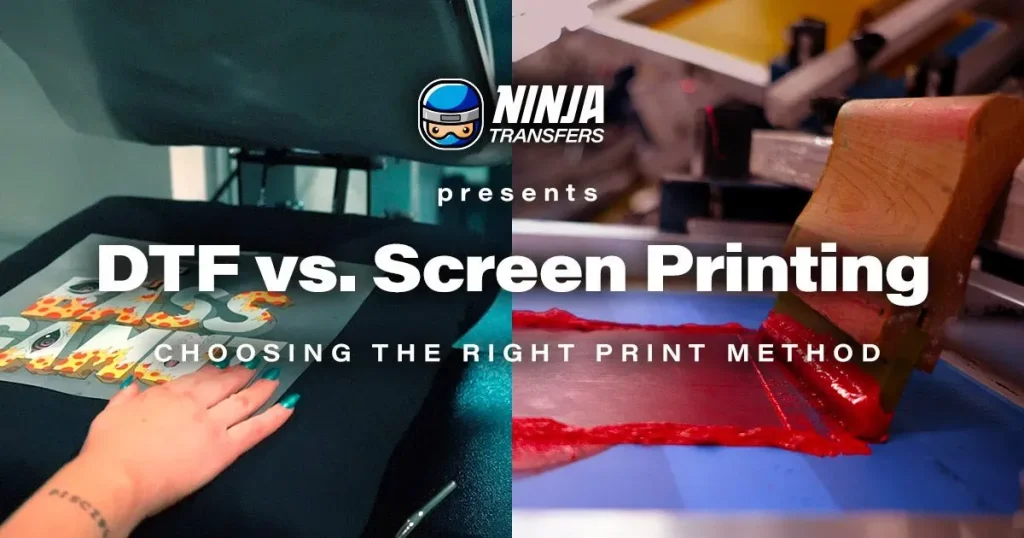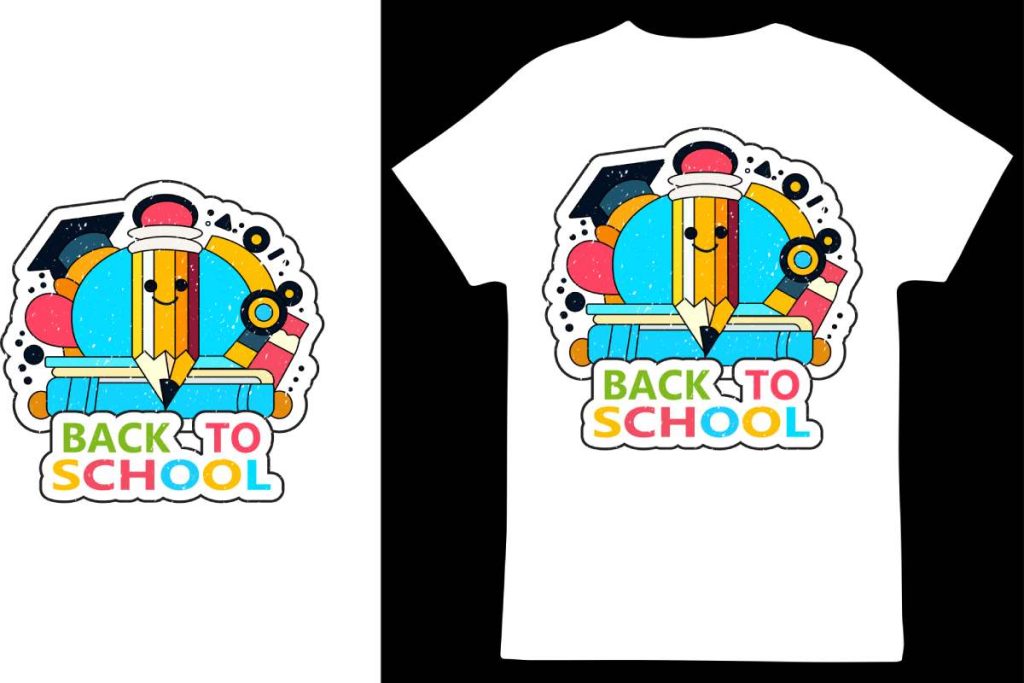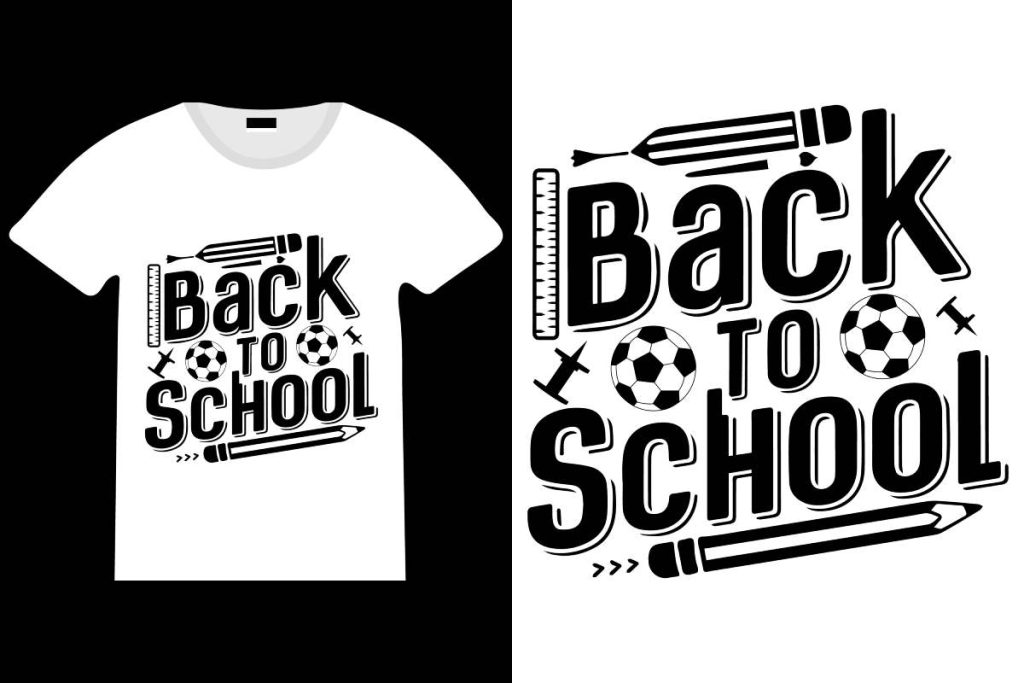In the fast-evolving landscape of custom apparel printing, the debate between DTF Transfers and Screen Printing is gaining traction among businesses and designers alike. Both DTF Transfers and Screen Printing present distinct advantages that cater to various production requirements, leading to a significant impact on the quality and design possibilities of printed fabrics. While DTF printing is celebrated for its ability to render intricate designs and vibrant colors, screen printing advantages lie in its durability and cost-effectiveness for larger orders. Understanding the nuances of each method is essential for those in the industry, as the choice between DTF vs screen print will influence not only the final product but also the overall business strategy. In this comprehensive comparison, we will delve into these fabric printing techniques, evaluating their performance across critical dimensions.
As the realm of personalized clothing continues to flourish, delving into the distinctions between DTF Transfers and traditional Screen Printing proves invaluable for apparel professionals. These two printing methods each boast their unique sets of benefits and limitations that impact everything from cost considerations to design intricacies. While DTF printing focuses on applying detailed visuals onto garments, screen printing remains a tried-and-true standard for mass-producing high-quality apparel. By exploring a DTF vs screen print analysis, we will highlight which option might be the optimal choice depending on specific project needs and production goals.
The Process of DTF Transfers Explained
DTF Transfers, or Direct to Film Transfers, is a modern printing technique that has rapidly gained traction due to its ability to deliver high-quality, intricate designs. This method starts with printing your artwork onto a special film that is coated with a heat-activated adhesive. Once printed, a heat press applies the design to the fabric, making it perfect for a variety of materials. One of the benefits of using DTF printing is its ability to work seamlessly on both dark and light fabrics, giving designers the freedom to unleash their creativity without being constrained by fabric limitations.
Moreover, DTF Transfers maintain vibrant colors, ensuring that the details of any design are beautifully showcased. This process supports a wide range of designs, from multicolored graphics to detailed images, making it a suitable option for personalizing custom apparel. As the fashion industry continues to lean towards unique, customized items, understanding the mechanics of DTF technology becomes vital for businesses aiming to keep up with consumer demands.
Benefits of Screen Printing for Large Orders
Screen Printing is often regarded as the steadfast workhorse in the realm of custom apparel. Its process involves creating stencils, or screens, that use a mesh to transfer ink onto fabric, making it incredibly efficient for larger runs of items. One of the standout advantages of screen printing is its speed; once the initial setup is completed, thousands of garments can be printed in a fraction of the time it would take for other methods, such as DTF. This efficiency not only saves time but also significantly reduces costs per item as the quantity increases, making it highly suitable for businesses producing large orders.
Additionally, screen printing boasts exceptional durability. The inks used in this process bond with the fabric, creating a lasting imprint that withstands numerous washes without fading. This durability ensures that garments maintain their vibrant colors and overall quality long after the purchase. As a result, businesses that prioritize longevity and reliability in their printed apparel often choose screen printing for its proven track record, especially for promotional materials or items intended for heavy use.
DTF vs Screen Print Comparison: Key Differences
When comparing DTF Transfers and Screen Printing, there are notable differences that cater to varying business needs. DTF printing excels in producing complex designs in low volumes. This modern approach allows for personalized options that can showcase intricate details, making it particularly appealing for independent designers with smaller runs. Conversely, Screen Printing shows its true color when it comes to handling bulk orders. Since the printing process involves creating stencils, the initial costs may be higher, but they are offset by the lower cost per unit as the order size increases.
Another key difference lies in the texture and feel of the final product. Screen Printing typically uses thicker inks, which can impart a textured feel on the fabric, often preferred by those who value tactile experiences. DTF Transfers, on the other hand, yield a softer finish akin to that of traditional printing, allowing for vibrant colors without the added bulk. Understanding these contrasts between DTF vs Screen Print can aid businesses in making informed decisions based on the specific requirements of their projects.
Exploring the Cost Efficiency of DTF Transfers
Cost efficiency plays a crucial role in the decision-making process for businesses deciding between DTF Transfers and Screen Printing. DTF Transfers tend to offer an economical advantage for small runs, typically under 50 pieces. The setup costs for DTF are lower compared to Screen Printing, making it an ideal choice for independent artists or small businesses looking to produce unique designs without incurring hefty expenses. As these lower running costs translate into savings, many are drawn to the potential profitability of offering custom apparel without a significant financial outlay.
However, as production volume rises, this dynamic shifts. For larger quantities, Screen Printing often becomes the more cost-effective solution due to its established structure. While the upfront setup costs for screens can be substantial, the per-piece price decreases dramatically with larger orders. Businesses looking to fulfill bulk requirements often turn to this method because the cost efficiencies gained enable them to maximize revenue while delivering a quality product.
Environmental Considerations in Printing Techniques
As sustainability takes center stage in business practices across various industries, it is critical to consider the environmental impact of printing techniques like DTF Transfers and Screen Printing. Screen Printing has traditionally been associated with certain environmental drawbacks, notably the use of chemical inks that pose risks if not handled properly. However, the industry has seen significant advancements in eco-friendly inks that mitigate these concerns, making it a more sustainable option than past practices.
On the other hand, DTF Transfers are often lauded for their environmentally friendly inks that typically have a lower adverse effect on the environment. However, it’s essential to acknowledge that the heat press process consumes energy, which must always be taken into account in discussions around sustainability. Brands looking to position themselves as environmentally conscious must be thorough in evaluating the methods they choose and possibly pivot towards using greener practices within both DTF and Screen Printing to cater to the growing market of eco-aware consumers.
Emerging Trends in Custom Apparel Printing
The landscape of custom apparel printing is rapidly evolving, with DTF Transfers emerging as a favorable option among small businesses and independent creators. The adaptability of DTF printing allows for quick turnaround times on custom orders while maintaining high print quality. Many businesses are incorporating DTF technology into their operations to meet the rising demand for personalized retail experiences, reflecting a broader trend in the industry towards customization over mass production. As e-commerce continues to reshape the market, businesses utilizing this flexibility gain a competitive edge.
Despite the popularity of DTF Transfers, Screen Printing continues to hold a solid position in the market, especially for large-scale productions. While new technologies emerge, the reliability and efficiency of Screen Printing have kept it relevant, particularly for companies with significant volume needs. As each printing method develops, understanding these emerging trends will give businesses the insights necessary to navigate the dynamic customized clothing market effectively.
Frequently Asked Questions
What are the main differences in the process of DTF Transfers vs. Screen Printing?
DTF Transfers use a film to print designs, which are then heat pressed onto fabric, providing flexibility and vibrant colors suitable for small orders. Screen Printing, however, involves pushing ink through stencils directly onto garments, making it ideal for larger volume production with simpler designs.
How do quality and durability compare between DTF Transfers and Screen Printing?
DTF Transfers excel at reproducing intricate designs and bright colors but may face durability issues if not applied correctly. In contrast, Screen Printing is renowned for its longevity, as the inks bind well to the fabric, making it better suited for heavy usage and frequent washing.
Which method is more cost-effective: DTF Transfers or Screen Printing?
For small batches under 50 pieces, DTF Transfers tend to be more economical due to lower setup costs. However, as the quantity increases, Screen Printing becomes more cost-effective, providing lower per-piece prices for bulk orders.
What environmental considerations should be taken into account with DTF Transfers vs. Screen Printing?
Both methods have environmental impacts—Screen Printing may involve harmful chemicals unless sustainable inks are used, while DTF Transfers, while possibly using less harmful inks, require significant energy for heat presses. Businesses should evaluate the sustainability practices of both methods.
What trends are emerging in the adoption of DTF Transfers vs. Screen Printing in custom apparel printing?
DTF Transfers are gaining popularity among small businesses and creatives due to their ability to produce intricate designs quickly. Screen Printing, however, remains strong in the industry for bulk orders due to its reliability and well-established processes.
When should businesses choose DTF Transfers over Screen Printing for custom apparel?
Businesses should opt for DTF Transfers when they focus on producing vibrant, custom designs for low-volume orders. Screen Printing is preferable for larger runs that prioritize durability, cost efficiency, and consistency.
| Aspect | DTF Transfers | Screen Printing |
|---|---|---|
| Process | Utilizes a heat transfer method after printing onto film; ideal for intricate designs on various fabrics. | Uses screens to push ink through stencils; highly efficient for larger orders with simpler designs. |
| Quality and Durability | Produces vibrant designs but may fade or crack if applied improperly. | Renowned for durability, holding up better under wear and washing; inks bond well with fabric. |
| Cost Efficiency | More economical for small orders (under 50 pieces) due to low setup costs. | Becomes more cost-effective for larger volume orders as per-piece price decreases with quantity. |
| Environmental Concerns | Uses inks with lower environmental impact, but energy-intensive due to heat transfer process. | Involves chemicals that can be harmful if not managed well; eco-friendly inks are improving sustainability. |
| Trends in Adoption | Being adopted by creatives and small businesses for custom, detailed designs. | Still a preferred method for bulk orders due to reliability and established quality. |
Summary
DTF Transfers vs. Screen Printing remains a critical comparison for businesses in the custom apparel industry. Each method has distinct advantages suited for various production needs, making the selection process pivotal. DTF Transfers cater excellently to intricate designs and small orders with their vibrant results, while Screen Printing prevails in durability and cost-efficiency for larger runs. Thus, understanding these differences empowers entrepreneurs to make informed decisions that align with their business goals.



